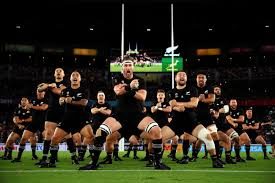
INTRODUCTION
The arrival of the preseason, the period when a team meets to start training ahead of the competitive season, is an exciting and adrenaline-pumping moment.
Usually a preseason develops on 7-8 weeks of work, often with double daily sessions and a good number of test matches in order to consistently verify the technical-tactical and physical level reached by the players.
The first few days are characterized by maximum positivity and availability by the athletes. It is therefore essential for the technical staff to arrive ready and prepared to make the most of this atmosphere: starting on the right foot, setting up and preparing the team learning the characters and characteristics of each player, especially in case of new faces.
The modulation of work is a rather complex and delicate task, first of all it is essential to reason as a “staff”: as a trainer I have my ideal of a pre-season but I have to be good at dressing on the players I have in front (age, skills, past injuries) and on the methodology, frequency and intensity of the training that the team faces on the field or court with the coach.
The key to the physical aspect of a pre-season is to carry on an optimal team conditioning and, in parallel, work on the personal physical needs that every athlete requires and needs.
The goal is therefore to put every player in a position to train at the best of their ability and in the safest conditions to push in the group. It is a strategy that is established with week after week and that requires a very careful eye and a lot of work even from home by the trainer, but it pays.

AT THE STARTING BLOCKS
Players usually arrive at the preseason in decent physical conditions: there are those who train independently or are followed by a personal trainer during the summer months, there are those who directly ask me for a preparation lineup to follow.
On the other side of the coin it happens that some athletes, even if they feel ready and fit, arrive with residual injury or ailments suffered in the end of the previous season (distortions, muscle problems, postural problems) neglected or partly treated because, it is like that, in the last and decisive games one must play and be on court.
That’s why, after the very first athletic sessions of re-activating the physique (made up of mobility, agility and free body strength), I think it is essential to invest an entire session to perform a battery of individual joint mobility tests to understand the health of the player, any imbalance between the limbs and compensation at the pelvis and column level. For me it is very important to involve in this appointment also the physiotherapy staff to also have their evaluations and activate together any intervention plans. Now that I have a clear and qualitative photograph I can start with the bulk of the work.
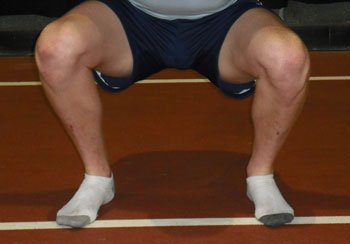
THE FIRST TWO WEEKS
The first two weeks of work are focused on the team’s athletic conditioning both on and off the court, there are no particular objectives or tactical-technical demands but you train to improve rhythm, execution and maximize the knowledge of the players and among the players.
AEROBIC AND METABOLIC SYSTEM
The first goal is to improve the cardio circulatory, aerobic system and get back the movements and specific steps of the discipline. Here’s how the first sessions of any pre-season are all about running and paces. Even if now a small world opens up; some trainers tend to favor constant cross country runs (between 30′ and 40′), others for fartleks (continuous running with speed changes), others for repeats (es. 1000 meters, 800 meters, 400 meters… performed at high-intensity with passive recovery, from standstill or light running).
My vision – a month before the day of the gathering I provide a program to each player of continuous and constant runs to increase first the running time and then the pace, to arrive already with a good base and be ready for a specific work according to the physiological request of the discipline. At this point instead of investing the first 4 or 5 sessions on general aerobic work, I can immediately propose for the first session a fartlek, for the second some “long” repeats (1000 meters and 800 meters for example) to give elasticity to the muscles and intensity and then already set intermittent work on court, that is a work focused on specific sport distances with proportional pause in comparison to the effort made. This opens a space to insert work of displacements and specific movements as soon as possible on the court or on other training surfaces with different stimuli (sand and swimming pool for example).
The amount of work between athletic and technical sessions is very high and at the beginning of the second week fatigue begins to be felt, it becomes important to insert strength exercises with weights.

FORCE
In this period, there should be at least 3 or 4 sessions in the weight room: these are general team sessions based on strength, total body, from the legs to the core to the top. General strength stimuli with overloads have dual function: to re-use the physique to this type of work, so important throughout the season, and stabilize the athlete’s joints and functionality on the court.
I underline that strength is the starting point for developing all other conditional abilities (strength, power, speed) and allows every athlete to have an ideal body control, preparing him to improve coordination and keep it safer direct or indirect traumas that can happen in the game.
It is optimal to start to include in the warm-up and final discharge operations exercises to immediately “attack” the gaps and compensation that emerged during the mobility and physiotherapy tests of the first days. Among the most useful warm up exercises are proprioceptive exercises to empower and coordinate feet and ankles, stabilize knees and shoulders, joint mobility exercises, core stability and muscle flexibility. This will save time and skills that will ensure a more effective and immediate inclusion of the personalized plan for the player in the near.
THE CENTRAL PART OF THE PRE-SEASON
The third week usually marks the start of friendly matches within the organization of the pre-season; more than friendly I like to call them test matches, because they are very important moments for me to understand if the first technical-tactical and physical goals have been achieved and if on track to prepare the team to compete at its best during the season. For the players, too, these are events they care about, firstly because they are competitive and therefore have a great desire for challenge, missing for months the adrenaline of the game and then to prove on themselves how good is their condition. Test matches at the result level have no value, but from a psychological and verification point of view they can do a lot; it must be the time when the team and every single player takes confidence and awareness and the coach and the strength and conditioning coach the control of operations.
I personally find it very important that the team can arrive physically ready and safe at any appointment, also because often the test matches are twice a week or, in case of tournaments, even for two or three consecutive days!
In fact, I consider them in all effects an integral part of the preparation, even from a conditional point of view. If in the first matches the game time is about equally distributed among the players, as the matches go by the hierarchies of the beginning of the season are already outlined and this is also a detail to keep in mind. The season’s first game is created and composed week after week, it does not have to be a deadline or the start of a new and different phase of the year. This is to underline that the workloads should not be absolutely the same for two months but must conduct each player with method, specificity and individualization to be ready to play a game to their full potential.

METABOLIC SYSTEM
Already from the third week a more specific aerobic plan should start on court: the continuous running to improve aerobic capacity gives way to intermittent metabolic workouts that have the goal to bring the athletes to high heart frequencies and then work on the recovery of pulses in the phases of break, just as it happens during the competition of all situational sports (in basketball we talk about 165-170 beats per minute average, very similar values are also in football). Those who manage to achieve excellent recovery skills will arrive at the end of the matches (in the decisive moments therefore) more lucid, explosive and able to perform the correct choices with the best technical gesture.
FORCE
At the weight room level, the work gradually becomes individualized to make each player’s strengths more consistent and work on the aspects where they are framed necessary and possible margins of improvement. The exercises still involve general force work to condition the whole body and make “the machine” solid and protected. Nothing is left to chance: pushing, pulling and twisting work for the upper body, core stability and both concentric and eccentric exercises for the lower limbs.
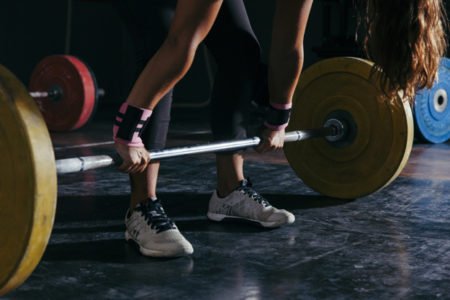
SPECIFIC ATHLETIC WORK ON THE COURT… BUT NOT ONLY THAT
In this area the concepts of balance, stability and consolidation of specific gestures are carried forward thanks also to the use of tools such as rubber bands and fitballs.
As for the athletic characteristics, for me, it is very important to focus on the coordination and mastery of footwork and changes of direction.
To expand the stimulus offer and therefore the coordination and adaptive response I like to bring athletes in different environments, also to diversify the training experiences on a psychological level and get out of the court a few more times, where they will spend 90% of their time throughout the season. I find highly performing to propose specific movements and running exercises in the sand, where the ankles and the postural system are called to a deep work of reactivity and stabilization of the body. Water is also a very effective and welcome environment, both in terms of conditioning and discharge, for example the day after a test match.
THE LAST TWO WEEKS OF PRE-SEASON
A lot has been done, usually you get to this point with already about 20/25 physical work sessions, 30 technical training and 6 /8 test matches. Now it’s about getting closer to the routine that will be the seasonal one, both in terms of the number of workouts and the load and intensity.
METABOLIC SYSTEM
I considered the “off the court” work completed, there will still be chance for a metabolic work session but shorter both in terms of duration and distances but not of intensity, a work more focused on speed. Strategically, recalls can be made, and will be very useful, throughout the season. Now, however, it is time for on-court training to consolidate the team’s cardio respiratory condition.
FORCE
In the weight room it would be ideal to be able to produce individual cards, thus abandoning the general teamwork and delivering a completely autonomous work to each player according to the condition achieved and the goals that from here on you want to achieve, in order to maximize the health and the performance.
The choice moves, in the central phase of the session, towards multi-joint exercises and more specific to the demands of the court. The volume of the proposal (workload) also drops to increase the demand for quality and intensity.
A complete routine plan for me is articulated in a wide first part of warm up focused on activation and mobility, with a focus on the postural and joint gaps to be recovered. We then continue with one or two (depending on the needs of the athlete) strength “base” exercises for both lower and upper limbs; the workout is completed with one or two multi-joint exercises with high demand of coordination and intensity.
Ideally during a routine week the weight room sessions are two, 48 hours apart and the second at least 72 hours from the game. In this organization the first session is more complete and strength, the second more postural and with one/two multi-joint power exercises.
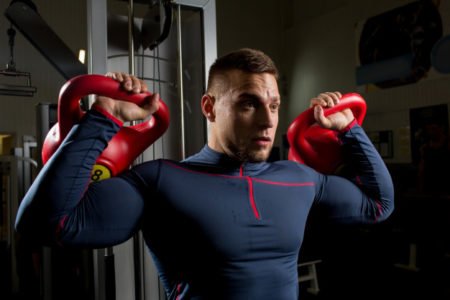
SPECIFIC ATHLETIC WORK ON THE COURT
Having arrived at full capacity as a weekly organization, unless there are special needs or expected recalls, the specific work must also be left at the court with technical training taking advantage of the condition built to push to the maximum under the instructions of the coach. This is also crucial: if the players are well and are already in good physical condition, the patterns and executions on the court will be carried out in a lucid and correct manner.
I believe from this point forward it is essential to make the most of every minute of pre-training warm-up to consolidate and give continuous stimulus to the concepts of footwork and coordination. Those 20 minutes of daily work (out of 4 weekly technical sessions for example) organized at best, with strategy and clear goals can become an additional hour and a half weekly of precious conditioning and not a simple warm up the team.
PHYSICAL TESTS, YES OR NO?
Ideally I say yes, it is always important to have values to make us (trainers) reflect and to show the players in order to trace a road more objective and make them aware of their work. But practice obliges you to make choices: which tests to administer and why? Is it really useful for what I want to achieve?
Over the years the mobility tests I administer at the beginning of preparation have given me a lot of feedback and work material, especially for my approach that tends to individualize as much as possible the training plan.
Physical tests are a check that in my opinion should be done when the team already has a minimum of condition (we speak of 10 days from the beginning of the gathering) before they seem absolutely non-predictive; so if on the tenth day, as I have done in the past, I decide to administer physical tests (yo yo test, squat jump test, 25 meters sprint, agility tests to name specific to situational disciplines) I risk ruining two to three days of preparation because at that time I require maximum efforts that will then leave toxins in the muscles of athletes for the next 48 hours, affecting the workouts; then when do you do these checks? Close to the start of the season or when you are in the middle of the test match calendar? This too could lead to inconsistencies with the preparation process. So if a trainer believes he derives from some tests the fundamental values for the development of his training plan and manages strategically to fit it into the pre-season calendar, well come.
I believe that every exercise if modulated with a goal and the possibility of verification is a test, just have a strategy. So, after a few years of experience, I would like to say that almost all the values I need are of a qualitative nature (mobility tests and physiotherapists) and that if I need to get to the bottom of some conditional ability of a player I can do very well apart.
Other important values are weight and body composition, to be administered at least 3 times during the pre-season, where often many players change percentages and figures and this is to be taken into account when deciding the load to be set for sessions especially of cardio, strength and power type.
STRETCHING YES OR NO?
Yes. In recent years there has been a lot of discussion about the usefulness of stretching, both in warm up and post-workout operations; numerous studies have been carried out in this regard which often do not coincide with each other. My vision is that dynamic stretching is optimal in warm-up phases because it is a series of exercises and movements that involve the whole body in a dynamic and complete way. Static stretching and static postures performed at the end of training are vital during this period, because they relax muscles that accumulate a lot of work and toxins in a short time and help to significantly reduce DOMS (muscle pains of the hours after training) making the player safer and ready for the next day.
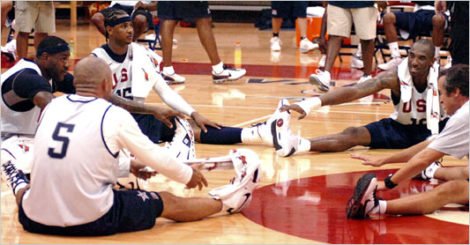
CONCLUSIONS
I hope I have clearly expressed the concept that a pre-season should not become “a mass murder”, a quote from one of my basketball players from a few years ago that stuck with me. It is instead a process that a trainer must have in mind and of which he must be very well prepared from the first day of the gathering; this process must then be modulated day after day to maximize the characteristics of each player, protecting it at the same time from the overloads that their physical structure and intensity and frequency of workouts bring with them. For this reason I consider individual work to be fundamental, especially in the weight room. The athlete must feel trained but also in place physically in order to express himself at his best; the condition improves mainly with the consistency of training for this reason it is essential to structure an ad hoc program to allow players to avoid injuries or debilitating ailments.
Getting to the famous first day of the championship with full and well prepared staff is not always easy nor, at times, possible but it must be the first goal of a pre-season. Getting into players, not just physically, listening to them and making them feel at the center of an athletic project is the fundamental and most effective weapon to get closer to that goal.
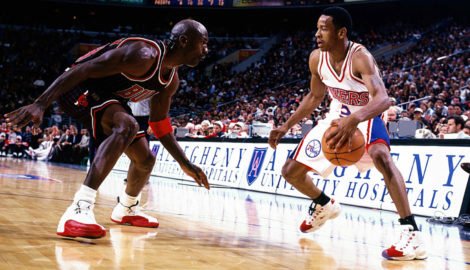
VIDEO
You can find something about the 2019/2020 pre-season of the basketball team that I train as physical coach, Omnia Basket Pavia.
BIBLIOGRAPHY
Cole B., Panariello R., Basket Anatomy, 2016
Heinaste E., Svilar L., Functional Movement Preparation, 2016
Andorlini A., Allenare Il Movimento, 2013
Stein A. Jr, Raise Your Game, 2019
Weineck J., La Preparazione Fisica Ottimale, 1994
Leave a Reply